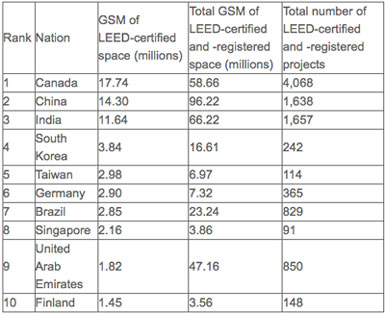Green building professionals are in great demand, with jobs that require LEED Accreditation growing 46% over the past year, says the US Green Building Council (USGBC).
There have been 9,033 job posts during that time that require LEED credentials, according to Pearson, which conducted the study. The certification indicates the person has advanced knowledge in specialized areas of green building, expertise in a particular LEED rating system and competency in the certification process.
In 2011, 35% of architects, engineers and contractor positions required these skills, or about 661,000 jobs, according to McGraw-Hill Construction. That’s risen to 45%. As of 2013, 185,000 people have credentials, up from 101,000 in 2009.
In January, USGBC launched Education@USGBC which provides continuing education for LEED professionals to keep their certification current.
Growth of the Market
More LEED-certified professionals are needed because the market is growing, according to McGraw Hill’s report, "Green Multifamily & Single Family Homes: Growth in a Recovering Market."
While a majority of homebuilders are building more than 15% of single (62%) and multi-family housing (54%) "green", that’s expected to rise to around 80% by 2018.
In the single family market, the most striking shift is that firms that specialize in green building comprise 19% of the market, expected to double by 2018.
73% of single family builders and 68% of multifamily builders say buyers will pay more for green homes.
"Greater consumer interest in green homes has contributed to ongoing growth, leading us to anticipate that by 2016, the green single family housing market alone will represent approximately 26% to 33% of the market, translating to an $80 billion to $101 billion opportunity based on current forecasts," says Harvey Bernstein, vice president of Industry Insights and Alliances for McGraw Hill Construction.
California still has the most LEED-certified homes, followed by New York and Texas.
In terms of cities, Minneapolis has the most green commercial space at an impressive 77%, followed by San Francisco (67.2%), Chicago (62.1%), Houston (54.8%) and Atlanta (54.1%), according to the National Green Building Adoption Index.
LEED Worldwide
Worldwide, 154,000 housing units are LEED-certified, more than doubling from 2011 to 2012, according to the USGBC, and there are over 60,000 commercial projects totaling 11.2 billion gross square feet.
After the US, Canada has the most LEED-certified square feet.

